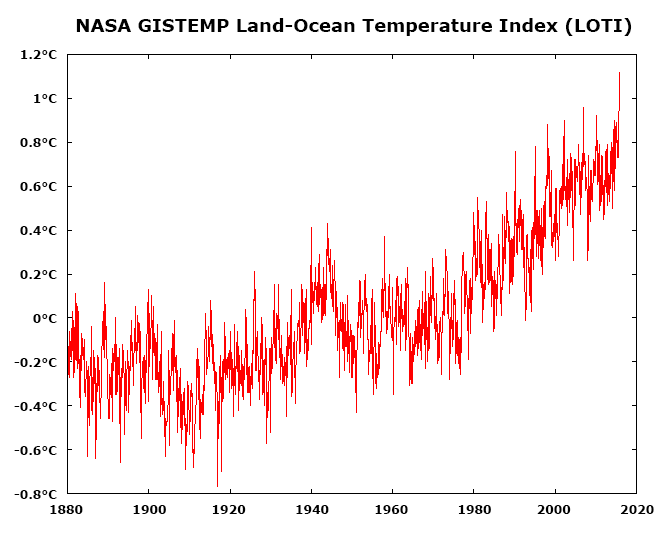

Investments have continued to pour into fossil fuel infrastructure at a rate that exceeds $1 trillion per year, with additional hundreds of billions of dollars in continued fossil fuel subsidies. "Emission rates have risen since 2000 by more than in the previous three decades combined.

Global greenhouse gas emission rates are now 50 percent higher than they were in 1990," he said. "Steps seen as bold in light of today's extremely daunting political opposition to climate action do not even match the expectations of five years ago, to say nothing of the scientific necessity," said Sivan Kartha, a member of the Board and a senior scientist at the Stockholm Environment Institute. But many critics argue it comes too late and won't have the teeth necessary to facilitate a shift away from fossil fuels that are blamed for much of the increase in greenhouse gas emissions. World leaders are set to meet later this year in Paris to ink a deal to combat climate change beginning in 2020. The Board was especially critical of world leaders for failing to take the actions necessary to keep temperatures from rising more than 2 degrees C (3.6 degrees F) over what they were in preindustrial times, which most scientists contend would avert the worst impacts of climate change, such as widespread droughts, heat waves and flooding. These failures of leadership endanger every person on Earth." "And world leaders have failed to act with the speed or on the scale required to protect citizens from potential catastrophe. "Today, unchecked climate change and a nuclear arms race resulting from modernization of huge arsenals pose extraordinary and undeniable threats to the continued existence of humanity," Kennette Benedict, executive director of the Bulletin of the Atomic Scientists, told reporters. Those two issues again took center stage as the Board announced it would bump the clock two minutes ahead, to 11:57 p.m. It hasn't moved this much since 2007, when the Board warned that "the world stands on the brink of a second nuclear age." It also cited climate change which it called "a dire challenge to humanity." It also was concerned about the Fukushima nuclear meltdown and the outbreak of H5N1 flu. over concerns about the state of nuclear arsenals around the world. The last time the clock moved was in 2012 when the Board set the minute hand at 11:55 p.m. The closer it is to midnight, the closer the world is to doom. The iconic Doomsday Clock, considered a metaphor for the dangers faced by the world, was pushed ahead by two minutes over concerns about worsening climate change and the world's failure to reduce nuclear weapons, a trans-Atlantic group of prominent scientists announced.Įvery year, the Science and Security Board of the Bulletin of Atomic Scientists analyzes international threats, particularly nuclear arsenals and climate change, and decides where the minute hand on the Doomsday Clock should rest. The world is two minutes closer to "doomsday" 00:23


 0 kommentar(er)
0 kommentar(er)
